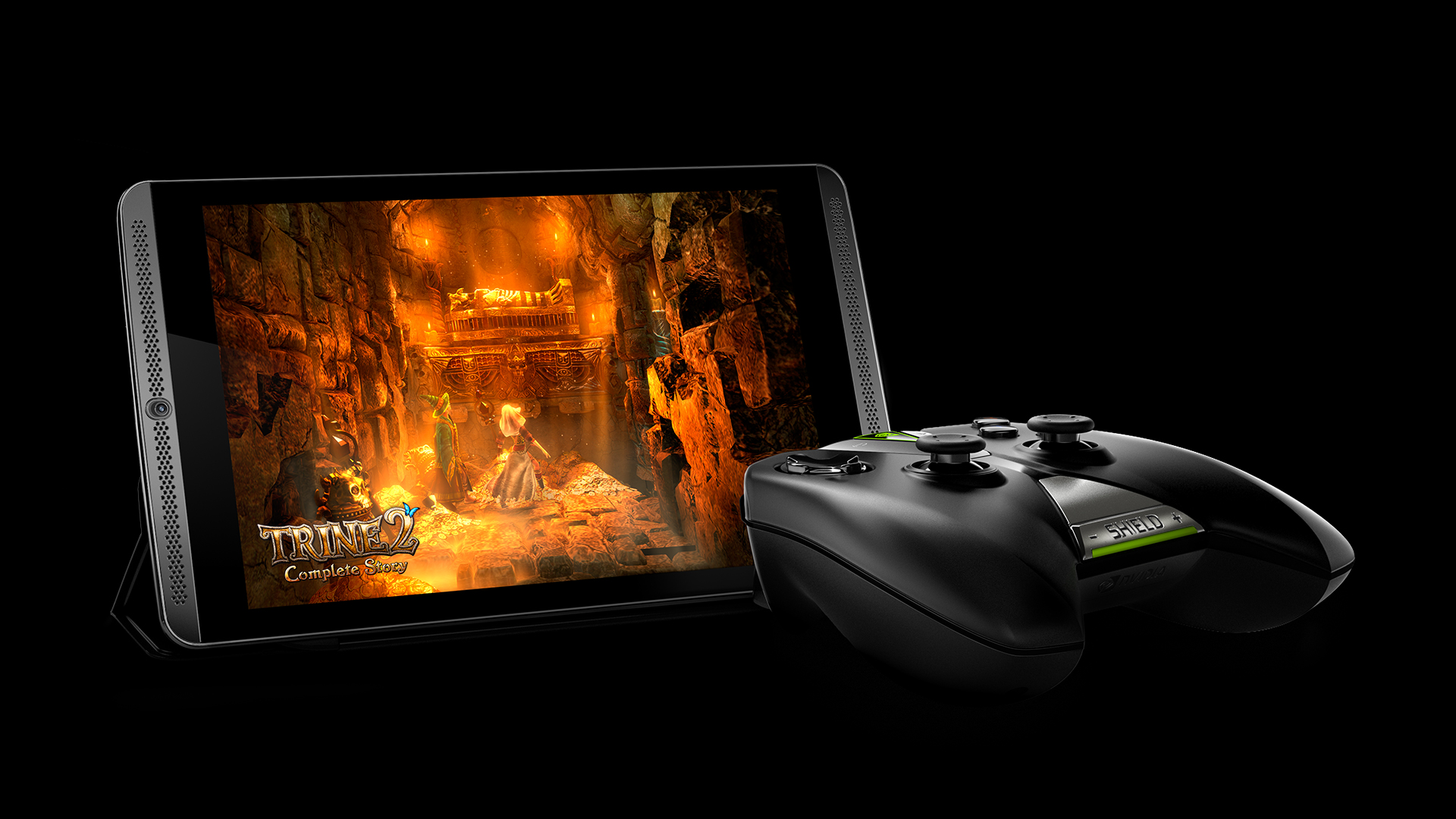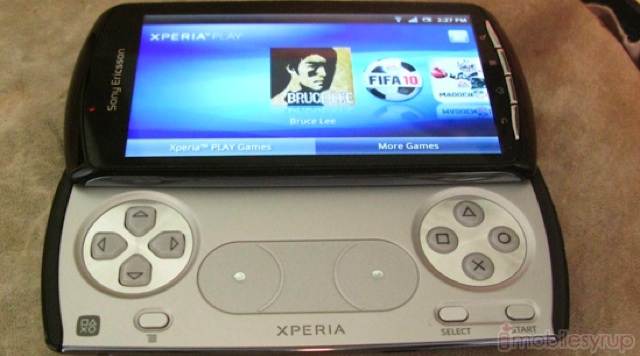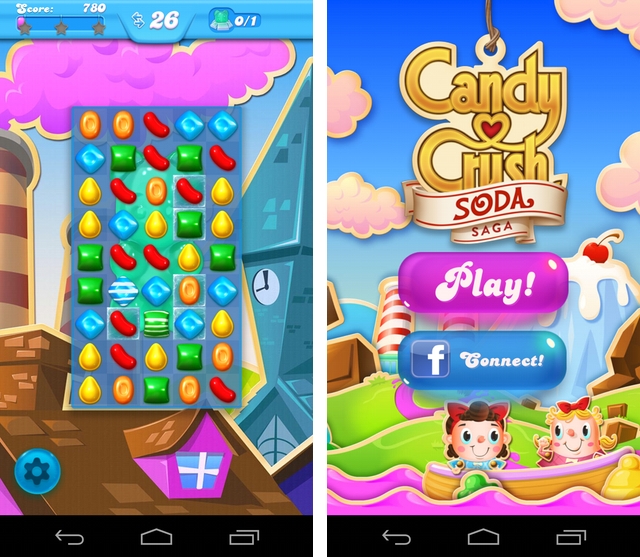
Welcome to Tête-à-Tête, a series where two of our writers converse on interesting topics in the mobile landscape — through chat. Think of it as a podcast for readers.
This week, Doug and Daniel despair over the lack of hardcore mobile gamers, but find hope in the upcoming Shield Tablet from Nvidia.
Daniel: Based on the buxomly-rendered females on the boxes of Nvidia’s GPU partners over the years, the company knows exactly for whom its chips are created. But as the “hardcore” gamer moves from the basement to the living room, from the self-built desktop PC to the Xbox or PlayStation, Nvidia too has had to reinvent its own brand without alienating the core user base that keeps it afloat.
Over the years, there have been attempts to recreate this so-called hardcore gaming experience on mobile platforms, but as often as Sony tries and fails to attract eyes from myriad Candy Crush addicts with its PS Vita, and as relatively successful as Nintendo has been over the years with its DS series, Apple and Google seem to be benefitting from a renaissance in casual games.
I was certainly intrigued by the original Nvidia Shield, which sported a Tegra 4 chip and 720p display in a clamshell form factor, but I am far more taken by the company’s attempt to capture both the casual and hardcore gamer with the Shield Tablet. On its own, the slate is an attractive, inexpensive Android device with what appears to be Apple A7-levels of horsepower. Paired with the optional Wireless Controller, it quickly becomes a conduit for “real” gaming. But is the ability to stream games from a local PC over WiFi a compelling feature? And does this no-compromise approach alienate one or both of its demographics?

Douglas Soltys: I’m going to neatly sidestep the gender disparity land mine that is hardcore gamer marketing, and go right to the hardware shift. Most gamers stopped buying portables the minute their smartphones and tablets could replace 80% of that gaming experience while also doing everything else. As such, I think hardcore gamers will flock to a tablet that allows them to replicate 80% of their PC/console experience.
There are concerns at the margins, however. Casual games, and games optimized for the Nvidia Shield (which can be found in The Shield Hub) should run very well on the tablet. It will be interesting to see the performance delta for unoptimized games, however, and how much it affects consumer interest. Why by a dedicated gaming tablet if it can’t handle all the games you want it to play?
I also have concerns about the $65 dollar controller that essentially has to be purchased for the hardcore gaming to make sense. I’ll withhold final judgments until it’s been in my hands, but it looks like the bastard lovechild of the Dreamcast and original Xbox controllers; that is not a compliment.

All of this is to sidestep the real question: how good is the cloud streaming? I agree that the local PC streaming is less than compelling, but great cloud streaming is something I have been craving since Sony announced PlayStation Now. It’s also no easy task. Do you think Nvidia can pull it off? Otherwise they’re trying to sell a midrange Android tablet with a funky controller.
Daniel Bader: It must be said that Nvidia’s GRID cloud gaming is in beta and only applicable to users in the Western USA, and it’s definitely, like PlayStation Now, a work in progress. More interesting to me is the ability to stream, in ultra low-latency, the latest games from a Kepler-powered PC, and potentially play them, anywhere, over a screaming fast LTE connection.
But what struck me today is that the Shield Tablet, with a stock version of Android and some of the fastest hardware on the market, makes for a pretty darn good tablet, gaming or no gaming. Those who buy it will likely have the proclivity to pick up and play a copy of Half-Life 2 every once in a while, but they’ll just as likely use the 8-inch slate to surf the web or play games. As for the $65 wireless controller, it may not be so attractive but it’s also not necessary; while it uses WiFi Direct to communicate with the Shield Tablet, using a Bluetooth controller from a PlayStation or Xbox does the job just fine.
Unoptimized games, ones that were made for Android in general, will likely run beautifully thanks to the sheer brute force of the SoC. But whether there will be enough games to truly take advantage of the Kepler-based GPU’s power remains to be seen: Nvidia has had a difficult time enticing developers to product high-quality ports of their existing titles, and Shield exclusives aside from the two aforementioned Valve titles remain hard to come by. At the end of the day, the Shield Tablet will play thousands of Android games, free and paid, 3D and basic, exactly the same as a Tab, Nexus or G Pad.
Douglas Soltys: I think you described the Shield Tablet once in conversation as ‘the Android tablet people might actually want to use,’ and I have a hard time disagreeing. But I still wonder if the Shield Tablet is the best possible mobile option for the hardcore gamer. As you said, PlayStation Now is still a work in progress, and depending on which day you ask Sony, will not be initially available in Canada. The limited U.S. availability of Nvidia’s GRID service fills me with buckets of sad.
So say you’re a longtime AMD proponent, and balk at the idea of purchasing a gaming tablet made by Nvidia, or a Canadian looking to get their stream on. What other options do you have?

Daniel Bader: Well that’s just the thing: portable gaming is going casual, while hardcore games are staying glued to the TV or monitor. Game streaming, once the kinks are worked out, promises to bridge that gap, but it’s still a half-measure. Nintendo and Sony have seen its share of the portable gaming market diminish rather quickly, and even promising first-party games can’t convince me to pick up my 3DS more than a handful of times a year.
The issues with mobile gaming are increasingly less about technology and more to do with culture: is it feasible to ask developers to port console or PC games to a touchscreen? On-screen controls are not nearly as accurate as tactile analog sticks, but developers can never take for granted that a user will own a controller. Impressive console ports like XCOM: Enemy Unknown, which sold gangbusters despite its $19.99 asking price, proves that there is a market, and Square Enix knows a thing or two about making a great Final Fantasy port for iOS and Android, but they are in the minority.
As Candy Crush, Clash of Clans and Kim Kardashian have proven, you don’t need depth to make money in the game industry, just a name, a repeating trope and lots of in-app purchases.
MobileSyrup may earn a commission from purchases made via our links, which helps fund the journalism we provide free on our website. These links do not influence our editorial content. Support us here.


